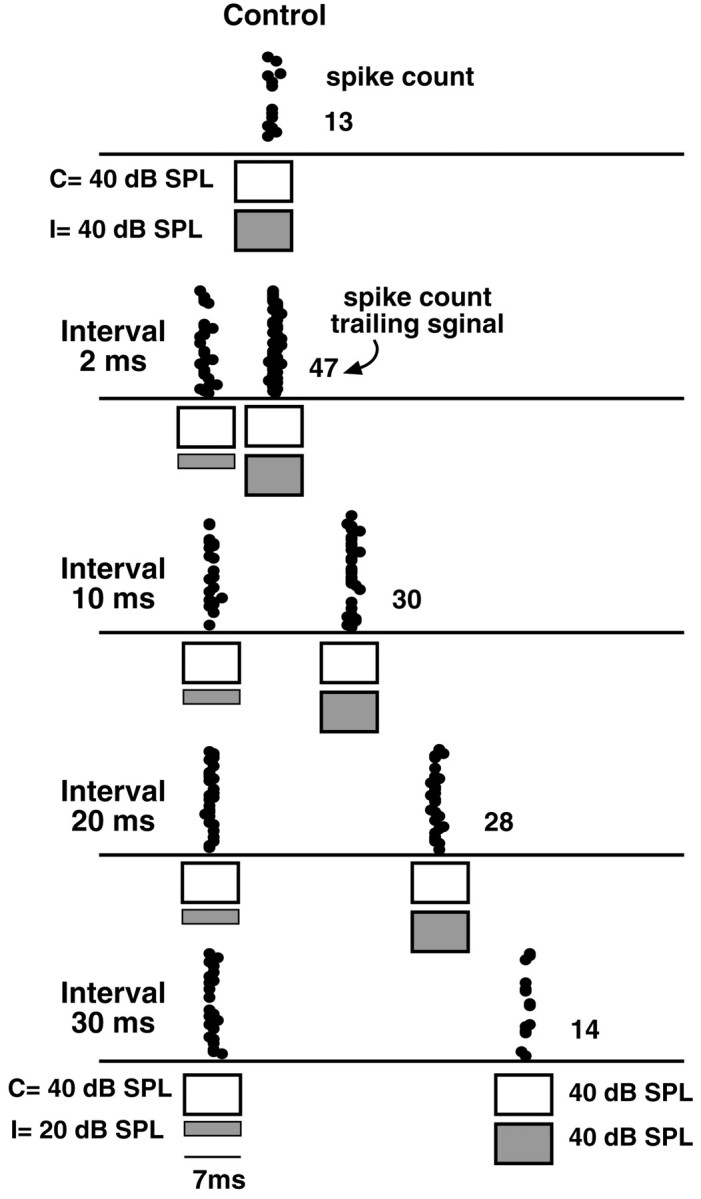Fig. 14.

Initial binaural signals that favor the ear contralateral to the ICc (the excitatory ear) relieve ipsilateral inhibition evoked by trailing signals. All signals were 7.0 msec FM signals that swept from 45 to 20 kHz. Signals presented to the ear contralateral to the ICc (the excitatory ear) are shown asunfilled bars, whereas signals presented to the ear ipsilateral to the ICc (the inhibitory ear) are shown as hatched bars. Top, Control showing that 13 spikes were evoked by binaural signals presented with equal intensities at the two ears (IID, 0 dB). Bottom, An initial binaural signal, having an IID of +20 dB (excitatory ear louder), relieved ipsilateral inhibition evoked by the trailing binaural signal. When the interval was 2.0 msec, the trailing signal evoked 47 spikes, whereas it evoked only six spikes when presented alone. Increasing the interval between the prepulse and trailing signal caused progressively less relief. Relief was over at 30 msec, because the trailing signal evoked almost the same spike count as it did when presented alone. C, Contralateral; I, ipsilateral.
